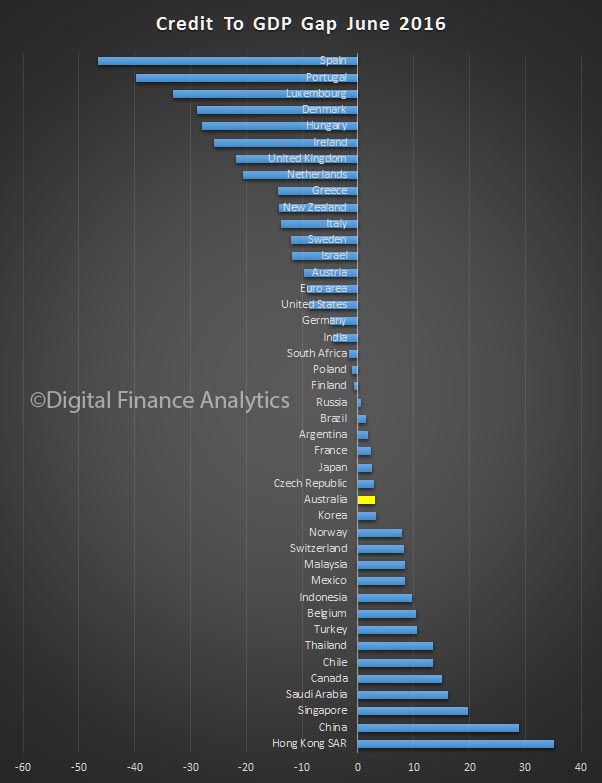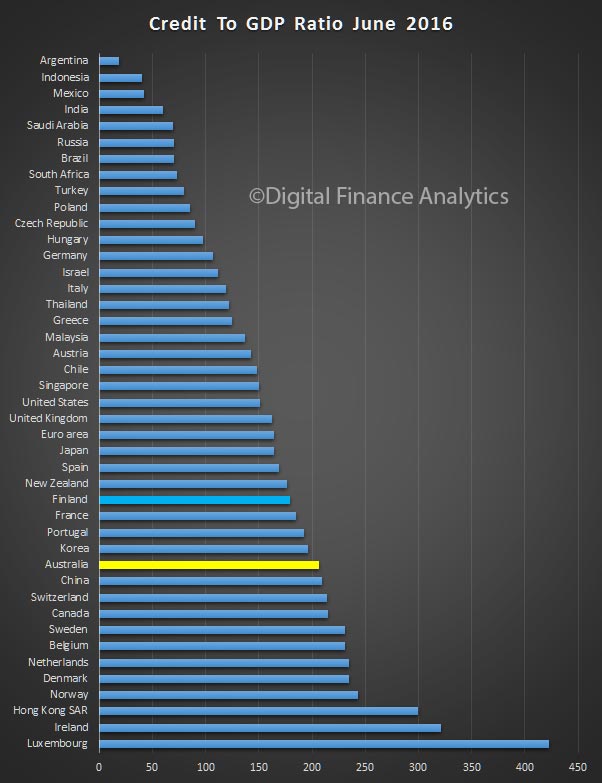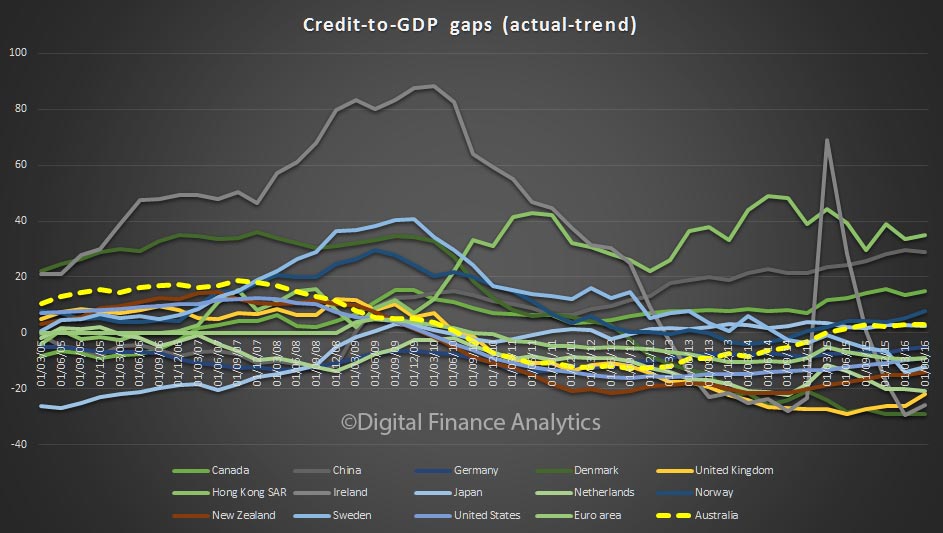The BIS has released their updated series on the Credit-to-GDP Gaps. In essence, the bigger the gap the greater the concern. Specifically, the bigger the gap, the more likely it is regulators should be lifting counter-cyclical buffers when it comes to capital management and control.
 The largest gaps are from Hong Kong, China. Singapore. Australia is up the list, behind Canada, but ahead of USA, UK and New Zealand.
The largest gaps are from Hong Kong, China. Singapore. Australia is up the list, behind Canada, but ahead of USA, UK and New Zealand.
Here are the raw GDP to Credit ratios. Australia sits behind China and Canada, but well ahead of USA, UK and New Zealand. We are at the higher risk end of the spectrum.
 The Credit to GDP Gap trends over time also tell a story. Our gap is higher now, compared with the past few years. Again a signal of rising risks?
The Credit to GDP Gap trends over time also tell a story. Our gap is higher now, compared with the past few years. Again a signal of rising risks?
The build-up of excessive credit features prominently in discussions about financial crises. While it is difficult to quantify “excessive credit” precisely, the credit-to-GDP gap captures this notion in a simple way. Importantly from a policy perspective, large gaps have been found to be a reliable early warning indicator (EWI) of banking crises or severe distress.
The published series cover 43 countries starting at the earliest in 1961.
The credit-to-GDP gap (gapt) is defined as the difference between the credit-to-GDP ratio (ct/yt) and its long-run trend tt.
Importantly, while the use of these total credit series as input data facilitates comparability across countries, it means that the credit-to-GDP gaps published by the BIS may differ from credit-to-GDP gaps considered by national authorities as part of their countercyclical capital buffer decisions. Given the EWI qualities of the gap, the indicator was adopted as a common reference point under Basel III to guide the build-up of countercyclical capital buffers (BCBS (2010)). Authorities are expected, however, to apply judgment in the setting of the buffer in their jurisdiction after using the best information available to gauge the build-up of system-wide risk rather than relying mechanistically on the credit-to-GDP guide. For instance, national authorities may form their policy decisions using credit-to-GDP ratios that are based on different data series from the BIS’s as input data, leading to credit-to-GDP gaps that differ from those published by the BIS.

 The BIS says
The BIS says